Montpelier, Vermont | Could You Live Here?
As idiosyncratic and surprising as the state it represents, Montpelier,Vermont, is the smallest capital in the nation, and proud of it.
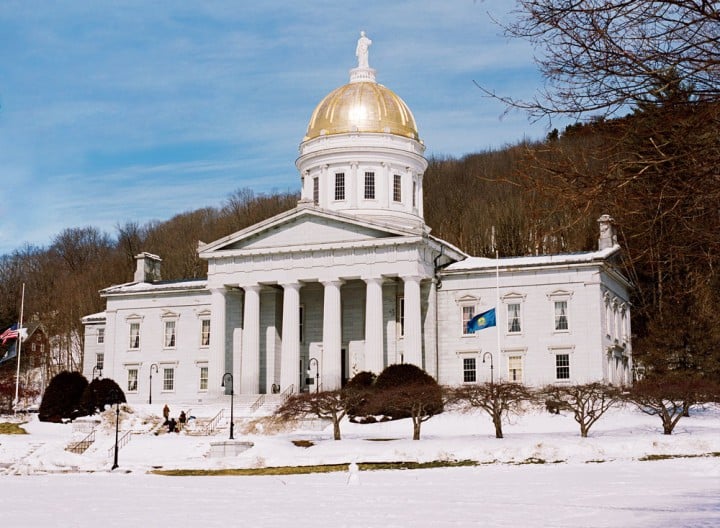

Photo Credit : Corey Hendrickson
The joke, of course, is that New Englanders are a taciturn lot. Which makes it all the more delicious when a handful of signs in the small, entirely delightful Vermont capital of Montpelier seem to be in on the joke, reducing places to their most essential nouns.
A neon RESTAURANT sign blazes above the New England Culinary Institute’s teaching eatery, NECI on Main. The COURT HOUSE raises its marina-red cupola on State Street. A downtown storefront gets right to the point: ANTIQUES. “I keep thinking there should be a CHURCH sign,” jokes Dan Wetmore, a craftsman/carpenter who’s lived and worked here for the past 30 years.
As idiosyncratic as the state it represents, Montpelier is the smallest capital in the nation, a stew of farmers, politicians, back-to-the-landers, musicians, artists, city escapees, and opinionated Vermonters. This city of 8,000 exudes a feeling of small-town intimacy backed by a richness that you’d expect from a much larger place, while flaunting an irresistible smorgasbord of all things Vermont: independence, steadfastness, creativity.
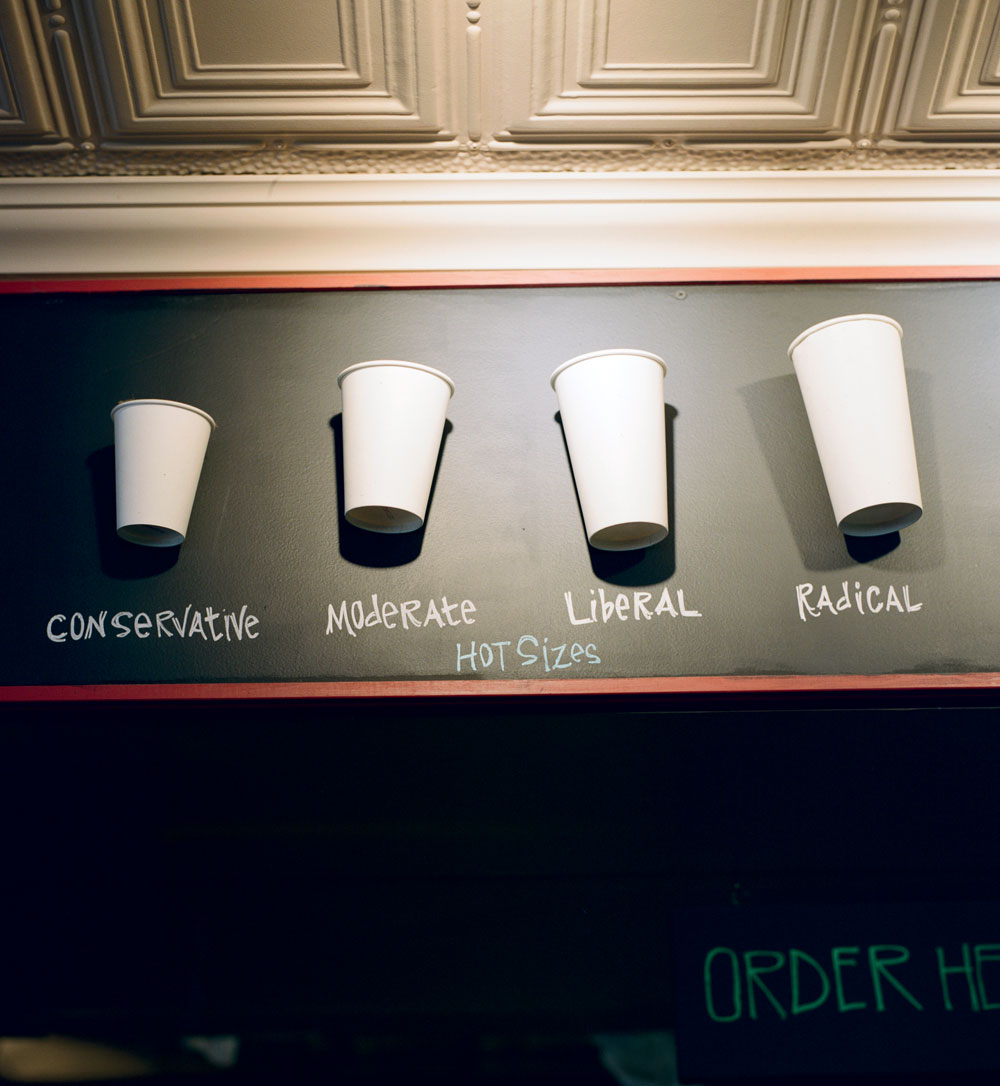
Photo Credit : Corey Hendrickson
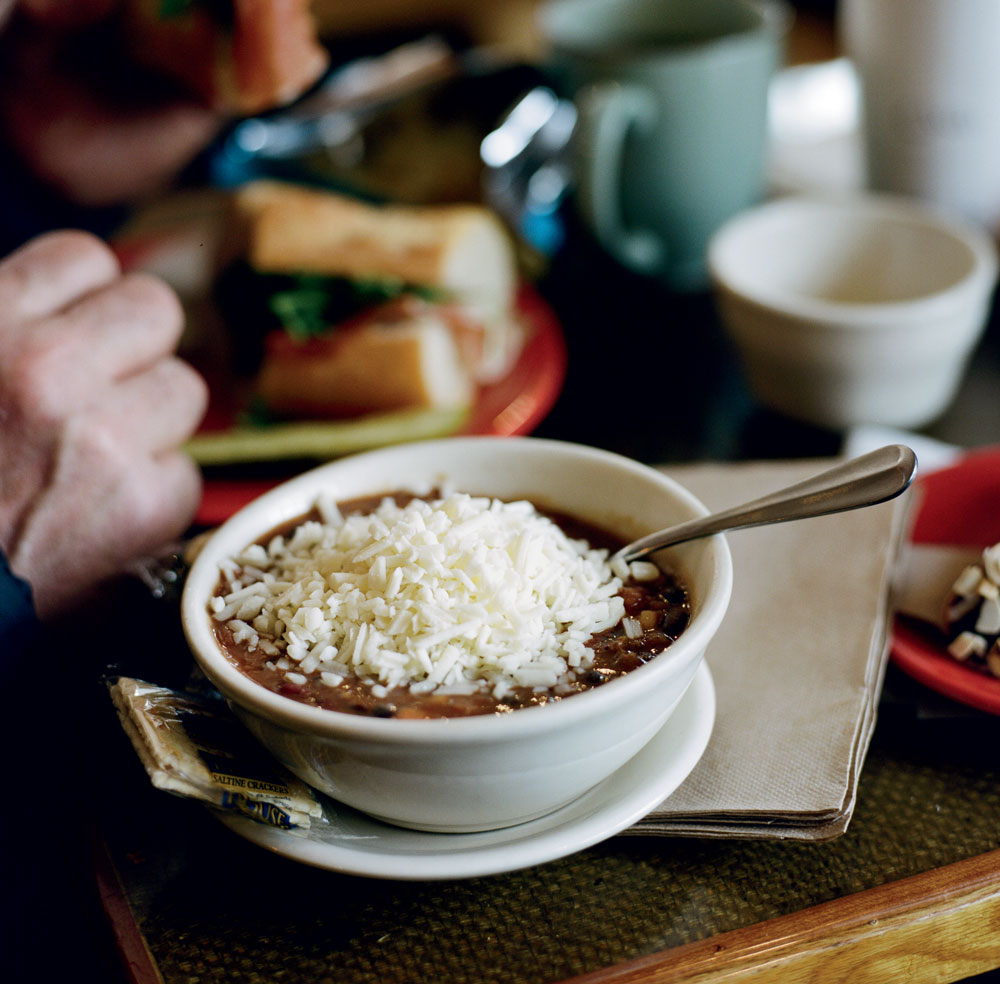
Photo Credit : Corey Hendrickson
Nature is also magnificently represented in this central Vermont landscape, nestled in the foothills of the Green Mountains. There’s a thriving arts, music, and theater scene to shorten the winter months: folk festivals, a Valentine’s Day Phantom who papers the town in hearts, the Green Mountain Film Festival, a naked bicycle ride. At the Vermont College of Fine Arts, creative types can earn an MFA in music composition, writing, or visual arts. Poems grace shop windows in April during National Poetry Month. There’s a MUSEUM (fine print: Vermont Historical Society) that welcomes 6,000 schoolchildren a year and does a superb job of condensing Vermont’s history—a rough-and-tumble affair of Ethan and Ira Allen revolutionaries, statehood (14th) in 1791, and an ongoing love affair with skiing.
The golden dome of the State House is never far away. A Greek Revival beauty built of local Barre granite, its vast lawn is a playing field for joggers, dogs, peaceful protests, and summer concerts. Representatives Hall is an open stage where visitors can watch history being made, and not for the first time. Vermont’s Constitution prohibited slavery before the 13th Amendment to the U.S. Constitution abolished that institution nationally. There’s no death penalty here. It’s the only state to not require a balanced budget, but it has achieved that anyway, since 1991. And in 2000, it became the first state to sign civil union into law.
The politically oriented signs in Montpelier tend to be more voluble.“Eat more kale,” suggests the boxy green T-shirt hanging in the window of Capitol Stationers. “Label GMOs,” demands a poster. “Local grass-fed organic beef,” announces the plate-glass window at the Coffee Corner Diner, where senators rub elbows with musicians and retirees.
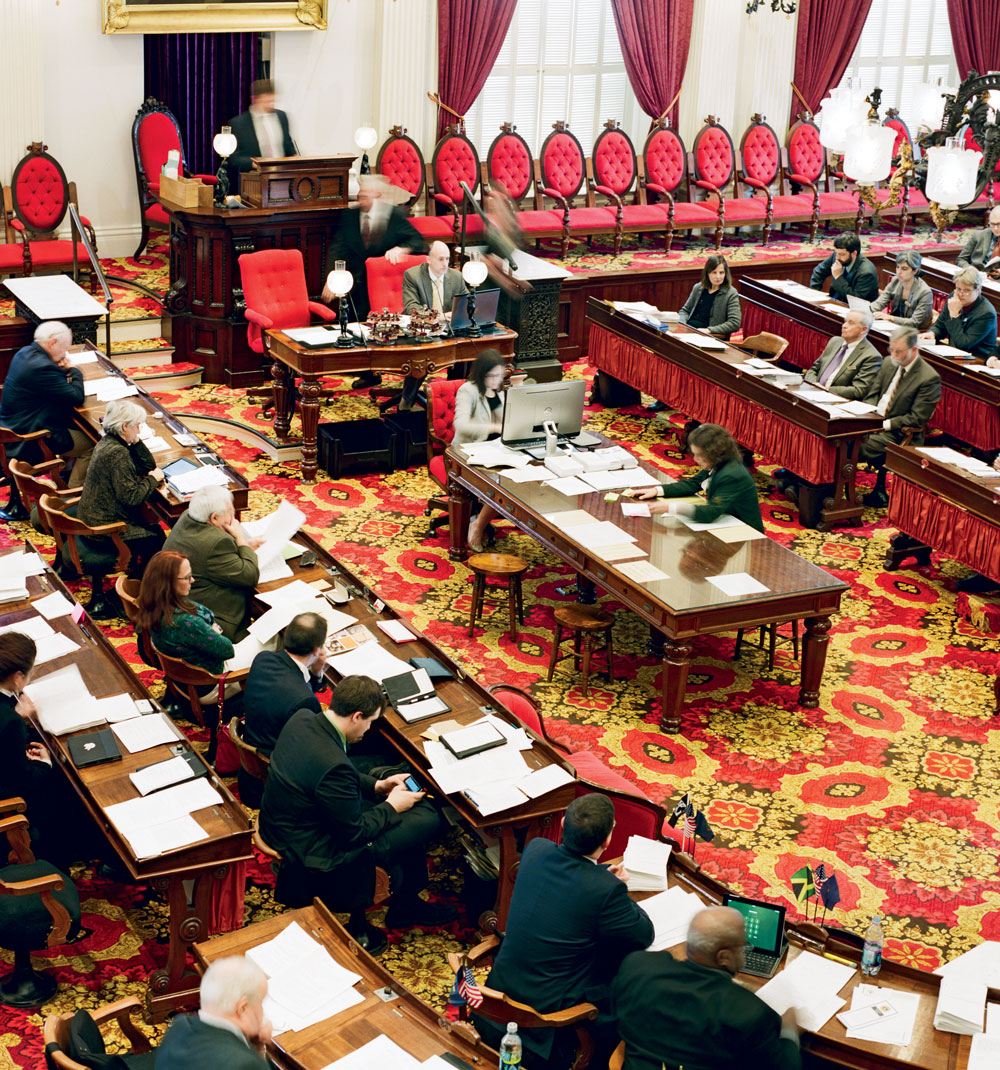
Photo Credit : Corey Hendrickson
The Setting The churning currents of the Winooski River sidle alongside U.S. Route 2 at the city’s southern border, a block from the State House. Its tributary, North Branch, meanders north, through the center of town, gliding under State Street. From here, you can reach the countryside in about five minutes—whether that means cross-country skiing at Morse Farm Maple Sugarworks in East Montpelier, or simply exploring Hubbard Park’s hiking trails or scaling its tower to admire the view. In winter, bring nerves of steel to drive the neighborhoods that climb from the town center—they’re like giddy San Francisco hills … with snow. Stowe, with its alpine challenges, is just 40 minutes away; so is Burlington, for a bigger-city fix.
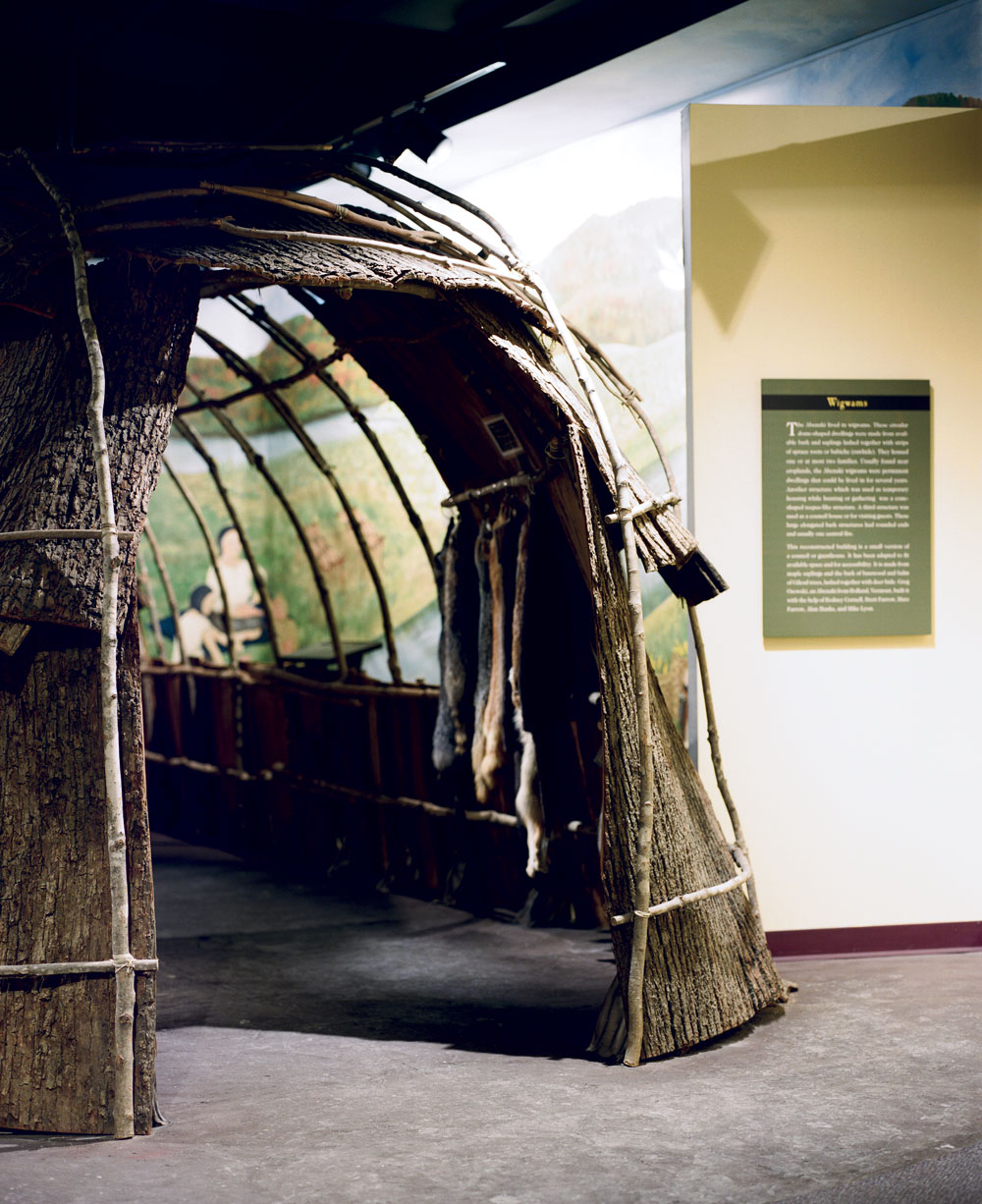
Photo Credit : Corey Hendrickson
Social Scene“A bulletin board is like having a great interview with a town,” a friend said recently. Montpelier’s bulletin boards are an art form, bursting with announcements at Hunger Mountain Coop, the Kellogg–Hubbard Library, and random cafés around town. You’ll find callouts for yoga classes, auditions, readings at Bear Pond Books, and art-house movies at the Savoy Theater. You can hear a concert of Beethoven’s last piano sonata at the Unitarian Church. Learn to play the fiddle or take a lantern-making workshop. If you can’t find something to get involved in here, you’re not reading.

Photo Credit : Corey Hendrickson
Eating Out In this farm-to-table cradle, the words local, sustainable, and artisanal crop up on menus all over town, and the front-and-center presence of NECI means that we’re awash in a buffet of seasoned pros and learners. The institute’s two training grounds—NECI on Main and La Brioche Bakery—showcase future chefs of America “being creatively uptight while being supervised,” says Al Kaiman at the visitors’ center. If you tend to judge a town by its cafés, you’ll have a hard time narrowing it down: Capitol Grounds is a cozy welter of MacBooks; The Skinny Pancake busts the limits of crêpes; and Bagitos (bagels and burritos) was hopping with a Celtic jam session one recent chilly afternoon. Restaurants run the spectrum from urban pub grub at Three Penny Taproom to Kismet’s farm chic.
ShoppingThe Artisans Hand gallery showcases the work of 120 Vermont crafters. A handful of longtime shops keep company with newer locally owned businesses on Main and State Streets: Bear Pond Books has been an indie institution since 1973; Capitol Stationers since 1950; and The Drawing Board has supplied artists since 1975. There’s a healthy quirk factor at storefronts like The Book Garden (magic, games, and H. P. Lovecraft) and One More Time, where you can peruse vintage purses to the sound of French girl singers from the ’60s.
Real Estate How much capital does it take to live in the capital? At the time of this writing, a pretty five-bedroom farmhouse built in 1890, with an in-law apartment and close to downtown, was listed at $308,000 for sale by the owner. A sun-splashed Victorian with four bedrooms behind State Street was priced at $338,900, and a charming three-bedroom 1910 gambrel, decked with columns, in a private setting but an easy walk to downtown, was listed at $199,000.
Resident Perk The Vermont History Museum offers a $55 household membership, which includes unlimited free admission to the library and exhibits. You can get lost in time in this engaging museum, with its glimpses of World War II, heartbreaking vignettes from the Revolutionary War, and a retro look at the ski industry. The State House is both a living museum and a modern-day forum that’s open to the public. “The People’s House” is just that—so much so that townsfolk rent out their rooms to legislators, effectively removing the separation between city and state.
Getting Your Bearings The Inn at Montpelier (147 Main Street): “We did our best to find a place in Savannah or Mexico,” smiles our innkeeper, Karel Underwood, ruefully, but Montpelier couldn’t be ignored. Nor can the 19-room Federal-style inn’s Martha Stewart–sanctioned porch.
More photos of Vermont’s capital city at: YankeeMagazine.com/Montpelier
Annie Graves
A New Hampshire native, Annie has been a writer and editor for over 25 years, while also composing music and writing young adult novels.
More by Annie Graves

